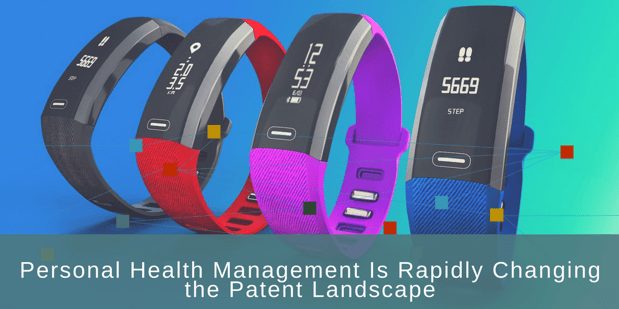 Technology has changed everything, including how people manage their own health. With the rise of wearable tech, artificial intelligence, and telemedicine, the answers they need are available on any device they happen to be carrying. Apps, websites, and AI assistants have changed the healthcare landscape.
Technology has changed everything, including how people manage their own health. With the rise of wearable tech, artificial intelligence, and telemedicine, the answers they need are available on any device they happen to be carrying. Apps, websites, and AI assistants have changed the healthcare landscape.
This incredible rise in technology has also changed the patent landscape. With each innovation comes a flurry of additional patent applications in an effort to both keep up and surge ahead of competitors.
Let’s take a look at some of the more revolutionary innovations, including the patents that may have inspired some of our most sought after inventions.
Fitness Trackers
FitBit is still the name in activity monitoring, even though several other companies have released similar technology in recent years. The patent first filed by FitBit covered the ability to track and monitor several activities, including steps taken, swim strokes, calories burned, pedal rotations on a bicycle, and various other activities.
While FitBit is still considered the name in wearable technology, they’re not the only dog in the fight. In addition to Apple and Android versions for phones and watches, FitBit has also regularly clashed with Jawbone regarding potential patent infringement, and apparently also tried to purchase their rival last year. Some of the lawsuits even suggest that FitBit’s technology was stolen directly from Jawbone through the theft of trade secrets.
This patent landscape map shows Jawbone’s indisputable claim over the technology, as they were granted the original patent years before FitBit burst onto the scene. You can see the patents in blue emerging as early as 2003, while FitBit’s red patents were filed much later, and all with references back to the seminal patent from Jawbone.
Perhaps instead of continuing to fight over what some see as a declining market, FitBit (or Jawbone) would be better served looking for new space in which to innovate.
Artificial Intelligence
Artificial intelligence is fully expected to drive down the cost of healthcare, both on a consumer level and a professional one. Maybe it’s hard to believe now, but consider how many times you’ve rattled off a list of symptoms to Google (or your phone’s AI assistant) and relied on the diagnosis that followed.
Consumer-level AI may provide answers that previously only a doctor or emergency-room visit could, but that’s not where the AI influence over healthcare stops. IBM’s Watson can also now diagnose medical conditions for physicians when presented with symptoms, as well as recommend treatment.
We’ll see more innovation in the AI arena, specifically because there is still so much left unexplored, and a lot of white space available for the taking.
Healthcare Apps
Last year, the FDA approved thirty-six healthcare apps for mobile devices. The ability to patent these apps may be questionable, with most only protected if they use hardware. An app that uses technology to do jobs that could also be done by humans—such as tracking metrics or looking up readily available information—may be harder to protect.
Still, patents are possible when creators disclose the methods of interacting with tech devices. This is beyond the realm of thought processes and into the land of hardware.
With apps that can now accurately predict a woman’s menstrual cycle, provide hands-on therapy from licensed mental health physicians, track heart activity and sleep patterns, and provide reminders and advice for prenatal care, the care of the patient is now firmly in the hands of the patient.
Still, with all of these incredible advancements that have given people the power of their own healthcare, there is still room for innovation. If you’re looking for white space within your industry and would like to see a sample industry study, let us know.



